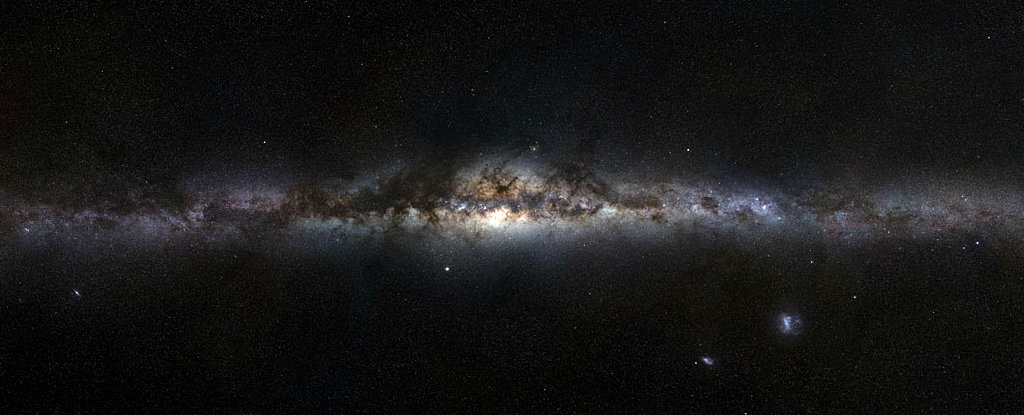Scientists
have found what looks like an exceedingly small galaxy in orbit around our
Milky Way, which had previously avoided detection. Named Hydrus 1, it’s located
about 90,000 light-years from Earth, between two other satellites of our galaxy
– the Small and Large Magellanic Clouds (SMC and LMC).
It was found
using the Dark Energy Camera (DECam) on the Blanco Telescope in Chile. A paper
describing the findings, available on arXiv, has been submitted to the Monthly
Notices of the Royal Astronomical Society for publication. It was led by Sergey
Koposov from Carnegie Mellon University (CMU) in Pennsylvania.
“We report the discovery of a nearby dwarf galaxy in the constellation of Hydrus, between the Large and the Small Magellanic Clouds,” the authors wrote in their paper.
Hydrus 1 is
a dwarf galaxy, described as being ultra-faint. It’s only about 326 light-years
across, which is pretty paltry when compared to our Milky Way, which is 100,000
light-years across. It’s so small that it might actually be a globular cluster,
a loose collection of stars.
It was
discovered within the Magellanic Bridge, a stream of gas that links both the
SMC and the LMC. Being found in the Hydrus constellation, which means “male
water snake”, it was described as a “snake in the clouds”. The researchers
found that Hydrus 1 has stars that are relatively metal-poor, which is similar
to other suspected dwarf galaxies like this. Galaxies are described as “dwarfs”
if they have about 100 million to a few billion stars, much less than the up to
400 billion or so stars in our own galaxy.
The team
also noted that the galaxy is rotating, making it the “first rotating
ultra-faint dwarf galaxy” ever detected, they wrote in their paper. And they
also said it was probably dominated by dark matter, which may be quite easy to
study due to its proximity.
At the
moment the connection between Hydrus 1 and the nearby SMC and LMC isn't quite
clear. But it’s hoped that data from the Gaia mission, which recently released
a stunning map of nearby stars, could give us some vital clues and tell us a
bit more about it.




Post A Comment:
0 comments: